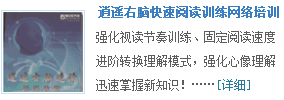定语从句又称为形容词性从句,引导定语从句的关系词有关系代词:who, whom, that, which, as, whose等和关系副词when, where, why等,关系代词在定语从句中充当主语、宾语,表语,定语等;关系副词则在从句中充当状语。定语从句可分为限定性定语从句和非限定性定语从句,关键是看有无逗号把先行词与定语从句分开。若有,是非限定性定语从句,此时关系词不能省略;若无,则是限定性定语从句。综观历年高考试题,我们可以发现该语法项目是测试中的热点与难点。为了便于同学们复习该语法点时有所侧重,本文拟就其考点作以归纳。
一、考查几组关系词异同
1. 考查先行词是物时,关系代词which, that充当主语或宾语异同:在限定性定语从句中充当主语、宾语关系代词which, that一般可以互换,关系代词作宾语时还可以省略。(1)which用于下列情况:( I )如果引导的是非限定性定语从句; (II)关系代词充当介词的宾语,且介词位于关系代词之前; (III)先行词本身是that等。(2)that用于下列情况:( I ) 先行词是all, everything, anything, nothing, little, much等不定代词;(II)先行词被all, any, every, no, little, much, some等词修饰;(III)先行词被序数词、形容词最高级修饰或先行词本身是序数词;(IV)先行词被the only, the very(正是、恰是),the last修饰;(V)先行词中既有人也有物;(VI)在which或who的特殊疑问句中含有定语从句等。另外需要注意:先行词是the way,并在定语从句充当状语时,关系代词用that或省略,若用which,其前加介词in。
[典型考题]
①(09江西)The house I grew up ________ has been taken down and replaced by an office building.
A. in it B. in C. in that D. in which
②(07年浙江)Chan’s restaurant on Baker Street, ______ used to be poorly run, is now a successful business.
A. that B. which C. who D. where
③(04湖北) What surprised me was not what he said but ______he said it.
A.the way B.in the way that C.in the way D.the way which
④(10全国Ⅱ)I refuse to accept the blame for something ________was someone else’s fault.
A. who B. that C. as D. what
解析:①B。该题考查的是定语从句中关系代词前的介词位于谓语动词之后,关系代词可以省略,定语从句补充完整为:(which/that) I grew up in,修饰先行词the house。若选择D项,应该用in which I grew up ②B。先行词Chan’s restaurant在非限制性定语从句充当used to be poorly run的主语,故用which。③A。在not…but…结构中,前后应一致,因but之前是名词性从句,故其后也应该是名词性从句或与之相对的名词等,又因the way在该定语从句充当方式状语,所以关系词用that, in which或省略,故选the way。④B。不定代词something在定语从句作主语,用that引导。
2. 考查先行词是人,关系代词who,whom,that充当主语或宾语异同:在限定性定语从句中充当主语一般用who,that;充当宾语时三者可以互换或关系代词还可以省略。下列情况用who或whom:( I )在非限定性定语从句中,先行词是人,并在从句中充当主语,关系代词用who,充当宾语,用whom或who(口语中),(II)先行词是人,介词后的宾语,只能用whom等。
[典型考题]
①(06北京)Women _____ drink more than two cups of coffee a day have a greater chance of having heart disease than those ______ don’t.
A. who ; 不填 B. 不填 ; who C. who ; who D. 不填; 不填
②(10浙江)The settlement is home to nearly 1,000 people, many of left their village homes for a better life in the city.
A.whom B.which C.them D.those
解析:①C。两处都是考查定语从句,并且都是关系代词充当主语,第一个空格前的women是其后的定语从句的先行词,并在从句中充当主语,第二个空格前的those指代的是women,是其后的定语从句的先行词,并在从句中充当主语,故前后两空都用who。②A。在非限定性定语从句中表示人的先行词 “1,000 people”充当介词of的宾语,故用whom。
3. 先行词是人时,关系代词which与who/whom在定语从句的区别:关系代词which引导定语从句,并在从句中作表语或补足语时,其先行词可以是表示人的职业、身份、性格、才能等,但这里的人不是指具体的人;而who在定语从句中作主语、宾语(口语),whom在定语从句中只作宾语,who或whom代的先行词是具体的人的名词或代词。
[典型考题]
①(05湖北)Her sister has become a lawyer, ______she wanted to be.
A.who B.that C.what D.which
②(07北京)We shouldn’t spend our money testing so many people, most of _____are healthy.
A. that B. which C. what D. whom
解析:①D。此处的lawyer从表面看指的是人,但实际上是人的职业,并在非限制性定语从句充当be动词的表语。故用which。②D。先行词people在非限制性定语从句充当介词of的宾语,故用whom。
4. 关系代词whose与which在定语从句作定语的区别:在“(介词)+关系代词+名词”中,关系代词作定语,一般多用whose(即指人,也指物);但若名词是case, point, reason, fact, situation, time等抽象名词用来总结整个主句的情况或句子的部分内容时,作定语的关系代词用which,结构常见于“介词+关系代词+名词”。另外需要注意:物作定语时,whose+名词=the +名词+of+which 或of+which +the+名词。
[典型考题]
①(05重庆)Mark was a student at this University from 1999 to 2003, he studied very hard and was made chairman of the students’ Union.
A. during which time B. for which time
C. during whose time D. by that time
②(10山东)That’s the new machine ______ parts are too small to be seen.
A. that B. which C. whose D. What
③(08陕西)The man pulled out a gold watch, were made of small diamonds.
A. the hands of whom B. whom the hands of
C. which the hands of D. the hands of which
解析:① A。此题考查在定语从句中during which time表示“在1999至2003期间”。② C。空格处所选的词应该是引导定语从句并且在从句中作parts的定语,所以使用whose。whose parts=the parts of which或of which the parts。③D。先行词watch与定语从句中the hands构成从属关系,故结构为:the hands of which或of which the hands或whose hands。
5. 考查关系代词which与as引导非限定性定语从句的异同。两者都可并指代主句中的一部分或整个句子的内容,在从句中做主语、宾语等,位于主句之后。(1)下列情况多用which: ( I )在非限制性定语从句作主语时谓语动词是连系动词之外的行为动词;(II)非限制性定语从句用以对主句的意义进行补充,前后不一致,出乎意料的;(III)非限定性定语从句的关系代词紧跟在介词后面充当介词的宾语等。(2)下列情况用as: ( I )在主句之前或插入主句之中用as;(II)表“如同……那样,按照,正如”含义,这里的as主要起与上下文联系的作用,表达说话人的看法,并指出内容、出处和根据等,常用的结构有as we know(众所周知),as often happens (正如常发生的那样), as is often the case(情况常常如此),as is+announced/expected/known/imagined/mentioned/said/shown/reported (正如所……)等。
[典型考题]
①(10四川)After graduating from college,I took some time off to go travelling, turned out to be a wise decision.
A.that B.which C.when D.where
②(06江苏)The owner of the cinema needed to make a lot of improvements and employ more people to keep it running, _______ meant spending tens of thousands of pounds.
A. who B. that C. as D. which
③(04江苏) ______ is often the case, we have worked out the production plan.
A. Which B. When C. What D. As
④(00北京春招) The result of the experiment was very good, ______ we hadn't expected.
A. when B. that C. which D. what
解析:①B。此处应为which引导的非限制性定语从句,which代替前面整个句子。②D。从句中的谓语动词meant是非连系动词的行为动词,故用which。③D。关系代词在非限制性定语从句指代后面一个句子,且在此从句中充当主语,故用As。④C。关系代词在非限制性定语从句指代前面一个句子,并在从句充当宾语,由从句可知,前面一件事是出人意料,并作expected的宾语,故用which。
6. 考查关系代词与关系副词where,when,why的区别及关系副词相互之间的区别:(1)可以用关系副词where代替in which/on which/to which等表示地点的状语,常见表地点的名词既有“具体”的(如:place,school,family等)也有“抽象”的(如:point,situation,career,activity,job,stage,scene等)。(2)可以用关系副词when代替on which/in which/at which/during which等表示时间的状语,常见表时间的名词既有“具体”的(如:days,time等)也有“抽象”的(如:stay,occasion等)。(3)可以用关系副词why代替for which表示原因的状语(非限定性定语从句常用for which),此时其先行词常是reason。但需要注意的是:若表示时间、地点或原因的先行词在从句中充当主语或宾语时,只能用关系代词which,that或关系代词的省略形式(作宾语)。
[典型考题]
①(10福建)Stephen Hawking believes that earth is unlikely to be the only planet life has developed gradually.
A. that B. whereC. whichD. whose
②(09四川)She’ll never forget her stay there ________ she found her son who had gone missing two years before.
A. that B. which C. where D. when
③(02上海春招)Is this the reason __ at the meeting for his carelessness in his work?
A. he explained B. what he explained
C. how he explained D. why he explained
解析:①B。先行词planet在从句中做地点状语,用关系副词where或in which。②D。her stay为先行词,可以理解为抽象的一段时间(她呆在那里期间),when指代her stay在定语从句中做时间状语。③A。先行词虽然是reason,但在从句中充当explained的宾语,而非在从句中充当原因状语,故用he explained,省略了作宾语的关系代词。
二、考查定语从句中的“介词+关系代词”结构
1、考查该结构中关系代词的选用。若介词放在关系代词之前,关系代词指人时常用whom,指物时常用which。
[典型考题]
①(09海南)She brought with her three friends, none of I had ever met before.
A. them B. who C. whom D. these
②(10江苏)The newly built café, the walls of_______ are painted light green, is really a peaceful place for us, specially after hard work.
A. that B. it C. what D. which
解析:①C。在定语从句中代替先行词friends作介词of的宾语。故用关系代词whom。②D。在定语从句中先行词the newly built café作介词of的宾语。故用关系代词whom。
2、考查该结构中介词的选用。
(1)一般来说,确定关系代词前的介词,可以从以下三方面入手:先行词的意义;从句中的动词固定搭配;句子的意思。
[典型考题]
①( 08上海)We went through a period communications were very difficult in the rural areas.
A.which B.whose C.in which D.with which
②(10山东) Wind power is an ancient source of energy we may return in the near future.
A. on which B. by which C. to which D. from which
③( 06陕西)She was educated at Beijing University, she went on to have her advanced study abroad.
A. after which B. from which C. from that D. after that
解析:①C。把从句补充完整:communications were very difficult in the rural areas in/during the period,可以判断出此处用介词in。此句中介词的选用取决于先行词period。②C。把从句补充完整: we may return to an ancient source of energy in the near future,可以判断出此处用介词to。此句中介词的选用取决于从句中的动词固定搭配return to sth.。③A。主句与定语从句是先后关系,故用after which。。此句中介词的选用取决于句子的意义
(2)表示“整体和部分关系”、“同位关系”或“所属关系”,介词常用of。常见结构:(I)在some, any, few, little, none, all, both, neither, many, most, each等代词或数词的前后可以用of which/whom。(II)the +比较级或最高级前后用of which/whom等。
[典型考题]
①( 05全国I)I have many friends, some are businessmen.
A. of them B. from which C. who of D. of whom
②(04湖北)There are two buildings , stands nearly a hundred feet high .
A.the larger B.the larger of them
C.the larger one that D.the larger of which
解析:① D。先行词friends在定语从句中与some构成所属关系,故用some of whom或of whom some。②D。先行词buildings在定语从句中与比较级the larger构成所属关系,故用the larger of which或of which the larger。
三、考查定语从句的特殊结构
1.考查关于定语从句的分隔结构。命题者主要通过定语从句的分隔考查动词形式的选择和通过先行词的定位,确定定语从句的关系词及介词+关系词的选用。考查动词形式的选择主要表现在以下几方面:定语从句对主谓结构的分隔时的主句谓语动词选择;定语从句对从句中宾补结构的分隔时的非谓语动词;定语从句对主句定语、状语的分隔时的非谓语动词;定语从句对一些固定句式的分隔时的非谓语动词。
①(10上海)Thai is the only way we can imagine the overuse of water in students' bathrooms.
A. reducing B. to reduce C. reduced D. reduce
②(00全国)The managers discussed the plan that they would like to see_____the next year.
A. carry out B. carrying out C. carried out D. carry out
③(10江西)The girl arranged to have piano lessons at the training centre with her sister_____ she would stay for an hour.
A. where B. who C. which D. what
④(05山东)The country life he was used to ____ greatly since 1992.
A. change B. has changed C. changing D. have changed
⑤(07辽宁)You can’t imagine what difficulty we had ____ home in the snowstorm.
A. walked B. walk C. to walk D. walking
解析:①B。此处应该用不定式。the only way to do sth表示“做……的唯一途径”。作定语的不定式被定语从句we can imagine与被修饰词分开了。解答此类题应把定语从句去掉。②C。先行词the plan作see的宾语,此处的see后是复合结构,carry out充当the plan的补足语,并与其构成被动,故用carried out。解答此类题应把先行词还原到定语从句中去。③A。先行词为centre, she would stay for an hour作定语,与其先行词被介词短语隔开了,该从句不缺宾语或主语,故先行词在从句中作地点状语,故用where。为了保持句子平衡,定语从句与先行词往往被介词短语、副词或谓语等分开,解答此类题,关键找准先行词。④B。这里的he was used to是省略了关系代词的定语从句,change充当主句的谓语动词,因与since连用的主句常用现在完成时,同时主语是life,故用has changed。解答此类题应把定语从句去掉。⑤D。结合题意和词义,我们可以断定句中的we had是定语从句,修饰其前的difficulty,很显然,此题考查固定句式have difficulty (in)doing sth.。解答此类题应把先行词还原到定语从句中去看是否是固定句式。
2. 考查带有插入语的定语从句的关系词的选用。做此类题中时,把关系词后的插入语(如:I believe,Ithink,I expect等)去掉进行判断。
[典型考题]
①(05福建)—Is that the small town you often refer to?
—Right, just the one you know I used to work for years.
A.that B.which C.where D.what
解析:①C。you know是插入语,在解题时可以省略,可以看出the one指代the small town在定语从句中作地点状语,故用where
3. 考查省略式定语从句。主从句主语相同时,有时可以省略一些成分,变成“介词+引导词+不定式”的形式。
[典型考题]
①(05湖南)Frank's dream was to have his own shop ____ to produce the workings of his own hands.
A. that B. in which C. by which D. how
解析:①B。题中的先行词是shop,在定语从句中作地点状语,即to produce the workings of his own hands in the shop=he can produce the workings of his own hands in the shop,故用in which,相当于where。
四、考查定语从句的主谓一致
关系代词作主语时,从句中的谓语动词应与先行词保持一致。
[典型考题]
①(10全国Ⅱ)Barbara is easy to recognize as she’s the only one of the women who ________evening dress.
A. wear B. wears C. has worn D. have worn
②(09宁夏高考适应)She is one of the few girls who_____in the kindergarten
A. is well paid B. are well paid C. is paying well D. are paying well
解析:①B。“the only one of+复数名词+定语从句”中的先行词是the only one,并从句作主语,故从句谓语动词用单数形式,另外,从is可以看出句子是要表示一种习惯,因此要用一般现在时,故用wears。②B。“one of++复数名词+定语从句”中的先行词是复数名词,并从句作主语,故从句谓语动词用复数形式,根据句意,应用被动语态,故用are well paid。
五、考查定语从句与其它从句的区别
1. 考查非限定性定语从句与并列句的区别。区分办法主要看前后句之间是否有and、but等并列连词或分号等的存在,若有,则为并列句;如果只有逗号,且逗号后的内容是对前面某一名词的补充说明,则为非限定性定语从句。
[典型考题]
①(09全国II)My friend showed me round the town, was very kind of him.
A. which B. that C. where D. it
②.( 04重庆)I intended to compare notes with a friend, but unfortunately conldn’t spare me even one minute
A.they B.one C.who D.it
解析:①A。由两句中用逗号且上句内容在后句中充当主语可知,后句是非限制性定语从句,关系代词用which。②A。由两句中间有but可知,是并列句。句中的a friend指任意一个朋友,可理解为a friend of mine,而后半句意指“我的这些朋友们”,为复数,故选they
2. 考查主语从句与非限定性定语从语的区别。重点考察it,what和as的选用。
常见的考查结构:(1)“It be done(如:said/suggested等)that+从句(that+从句是主语从句,It是形式主语)”意为“据/人们(说/建议等)……”。
(2)“What be done(如:said/suggested等)is that+从句(that+从句是表语从句,what引导主语从句)”意为“所(说/建议等)的是……”。
(3)“As be done(如:said/suggested等),主句(As引导非限定性定语从句)”意为“正如所(说/建议等)的那样,……”。,
[典型考题]
①( 08福建) is known to us all is that the 2008 Olmpic Games will take place in Beijing.
A.It B.What C.As D.Which
②( 08上海)It has been proved eating vegetables in childhood helps to protect you against serious illnesses in later life.
A.if B.because C.when D.that
③( 04北京) is reported in the newspapers, talks between the two countries are making progress.
A.It B.As C.That D.What
解析:①B。what引导主语从句,并在从句中先当主语。②D。此结构是it是形式主语,真正的主语是that引导的主语从句。that在从句中不充当任何成分。③B。As引导非限定性定语从句,放句首,“正如”之意。
3. 某一名词或代词后引导定语从句与地点状语从句的区别。是定语从句时,该名词或代词在从句中充当成分;如果后面句子只是说明前面该名词或代词所处的位置,该名词或代词又不在从句中充当成分时,应该是地点状语从句。
[典型考题]
①(10天津)—Can you believe I had to pay 30 dollars for a haircut?
—You should try the barber’s I go. It’s only 15.
A. as B. which C. where D. that
②( 08山东)You’d better not leave the medicine kids can get at it.
A.even if B.which C.where D.so that
解析:①C。根据句意分析可知,表示地方的名词the barber’s在后面的从句中充当地点状语,故用where引导定语从句。②C。后面句子说明the medicine所处的位置,并且the medicine在后面的从句中不充当任何成分,故用where引导地点状语从句。
4. 考查定语从句和同位语从句的区别。它们都可放在名词后。但在定语从句中,该名词在从句中充当成分,从句对该名词进行修饰;同位从句是对前面抽象名词进行具体解释说明,该抽象名词不在从句中充当成分。
[典型考题]
①(08山东)—Do you have anything to say for yourselves?
—Yes, there’s one point we must insist on.
A.why B.where C.how D./
②( 06安徽)A warm thought suddenly came to me I might use the pocket money to buy some flowers for my mother’s birthday.
A.if B.when C.that D.which
解析:①D。point在后面从句中充当介词on的宾语,故此题考查定语从句中关系代词充当宾语。②C。that引导同位语从句,解释说明thought的具体内容,that在从句中不充当成份。
5. 考查the same,such引导限定性定语从句和结果状语从句的区别。the same,such,so可以与as或that搭配。as引导的是定语从句,前面名词或代词要在从句中充当成份;而that引导的是结果状语从句,从句结构完整。
[典型考题]
①( 07上海)Pop music is such an important part of society it has even influenced our language.
A. as B. that C. which D. where
②(00上海春招)These houses are sold at such a low price people expected.
A. like B. as C. that D. which
解析:①B。such…that中,that引导结果状语从句,从句中不缺成份。②B。such…as中as引导定语从句,且as代替price在从句中充当expected的宾语
练一练
1. He is the only one of the students who_____a winner of scholarship for three years.
A. is B. are C.have been D. has been
2.A computer is such a useful machine_____we can use everywhere.
A. that B. which C. as D. what
3.The river,_______ the banks are covered with trees,is very long.
A. whose B. which C. of which D. which of
4. China’s population is expected to increase to about1.5 billion in 2040,______it will start to decline slowly.
A. where B. which C. on which D.after which
5.In a sports team each player has a clear role,and there are few occasions_____members are confused or uncertain of their roles.
A. when B. which C. whose D. why
6.The doctor _______is leaving for Africa next month.
A. the nurse is talking to him B. whom the nurse is talking
C. the nurse is talking to D. who the nurse is talking
7.Finally,the thief handed everything ______he had stolen to the police.
A. which B. what C. whatever D. that
8.Alice received an invitation from her boss,______came as a surprise.
A. it B. that C. which D. he
9.In the dark street, there wasn't a single person ______ she could turn for help.
A. that B. who C. from whom D. to whom
10.The gentleman _______ you told me yesterday proved to be a thief.
A. who B. about whom? C. whom D. with whom?
参考答案:1—5 DCCDA 6—10 CDCDB
本文来自:逍遥右脑记忆 http://www.jiyifa.net/gaozhong/161157.html
相关阅读:英语高考写作备考 如何用英语设计名片和使用名片



